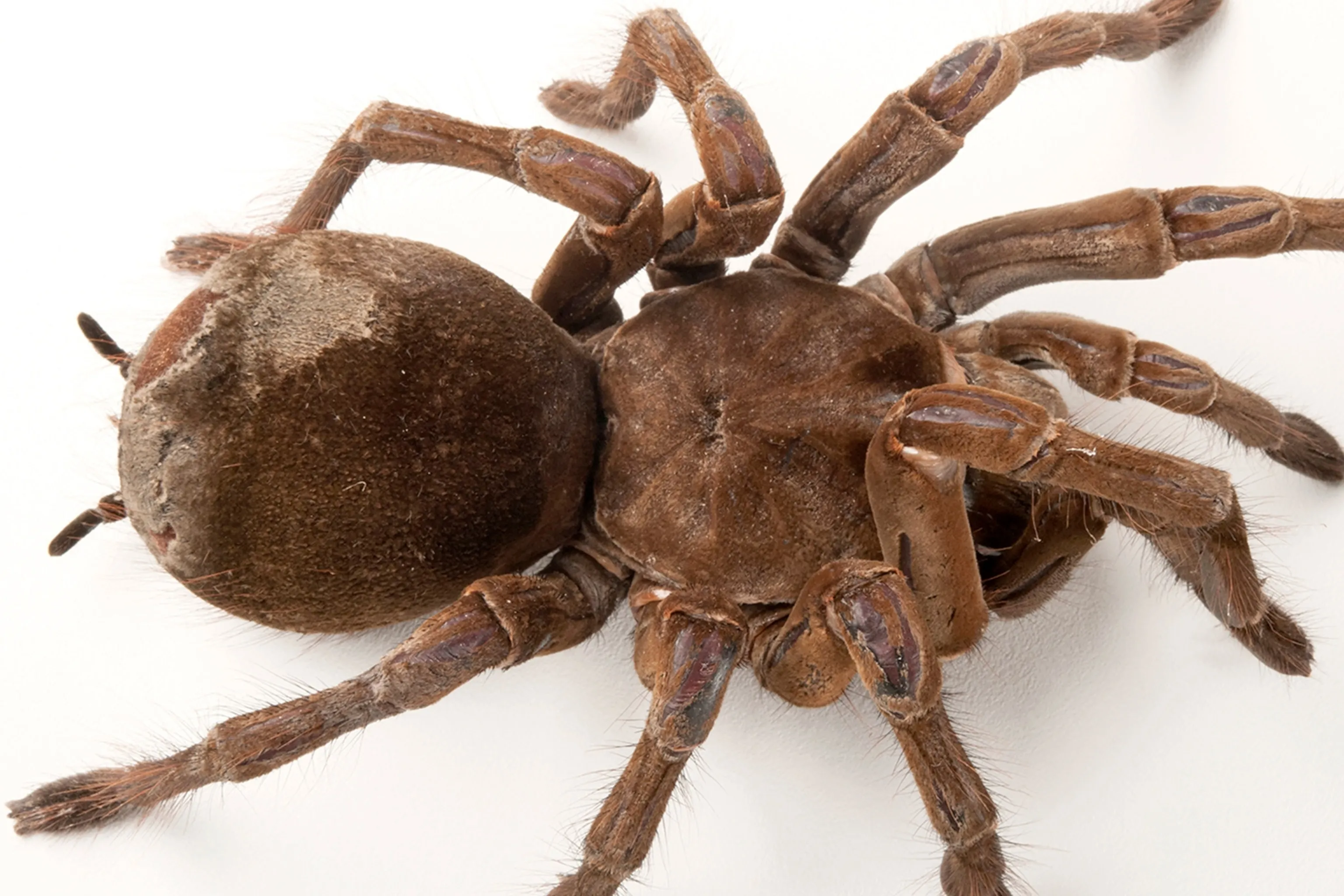Goliath Birdeater Tarantula Amazing Facts
The Goliath Birdeater tarantula (Theraphosa blondi) is one of the most fascinating and intimidating creatures in the world. Known for its massive size and impressive appearance, this spider is a true marvel of the animal kingdom. This article delves into ten amazing facts about the Goliath Birdeater tarantula, exploring its biology, behavior, and the captivating aspects that make it a subject of both fascination and respect. From its colossal size to its unique defense mechanisms, prepare to be amazed by the world’s largest spider.
The Goliath Birdeater What is it
The Goliath Birdeater (Theraphosa blondi) is a species of tarantula native to the rainforests of northern South America. It’s the largest spider in the world by mass, and one of the largest by leg-span. These spiders are a sight to behold, with their massive bodies covered in dense, reddish-brown hairs. Their sheer size and imposing presence have made them a subject of both wonder and fear. They are a truly remarkable example of the diversity and complexity found within the arachnid family. This tarantula is a formidable predator, perfectly adapted to its environment, and a true symbol of the rainforests where it dwells. (goliath-birdeater-overview.webp)
Size and Appearance
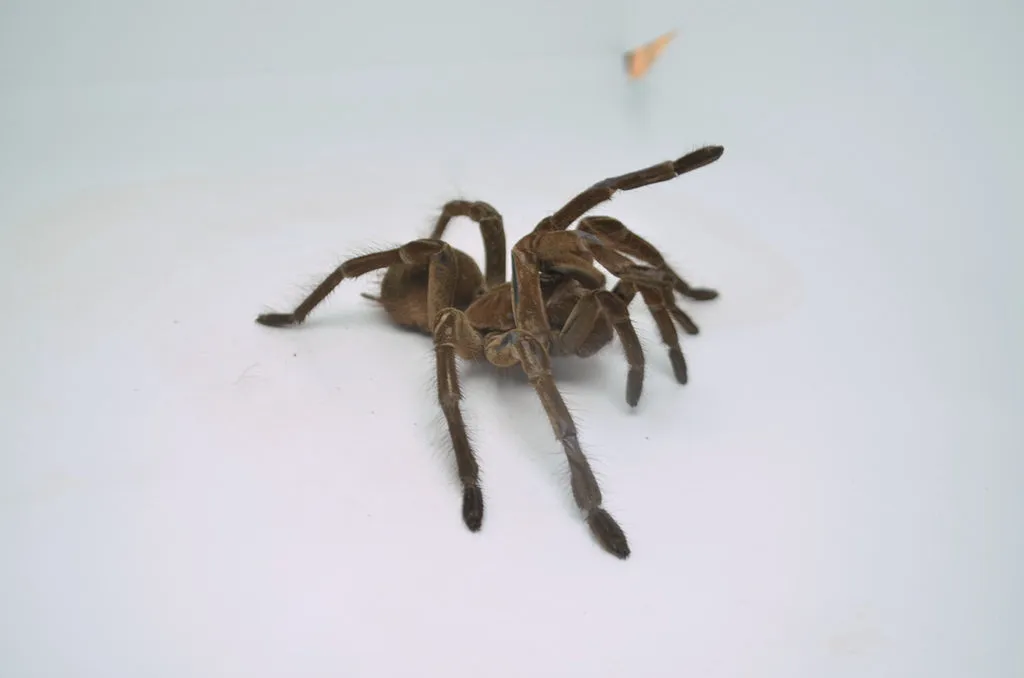
One of the most striking aspects of the Goliath Birdeater is its sheer size. These spiders can have a leg span of up to 12 inches (30 cm), with some specimens even larger, and weigh up to 6 ounces (170 g). Their bodies are covered in dense, reddish-brown hairs, which not only provide insulation but also serve as a sensory tool, helping them detect vibrations in their surroundings. Their chelicerae, or fangs, are also quite impressive, measuring up to an inch (2.5 cm) long. (goliath-birdeater-size-comparison.webp) This combination of size and physical features makes the Goliath Birdeater a truly impressive sight.
Habitat and Distribution
Goliath Birdeater tarantulas are primarily found in the rainforests of northern South America, including countries like Venezuela, Guyana, Suriname, French Guiana, and parts of Brazil. They prefer humid environments, typically living in burrows they construct in the ground or under rocks and logs. Their natural habitat provides the necessary shelter and food sources they require to thrive. The dense vegetation and high humidity levels of these rainforests create an ideal environment for these massive spiders. (goliath-birdeater-habitat.webp)
Diet and Feeding Habits
Despite their name, Goliath Birdeaters don’t primarily feed on birds, although they will occasionally consume them if the opportunity arises. Their diet primarily consists of insects, such as crickets and beetles, but they are also known to prey on other invertebrates, small mammals, lizards, and even snakes. They are ambush predators, lying in wait for their prey to come within striking distance. Once close enough, they inject venom to subdue their meal before consuming it. (goliath-birdeater-feeding.webp)
Venom and Bite
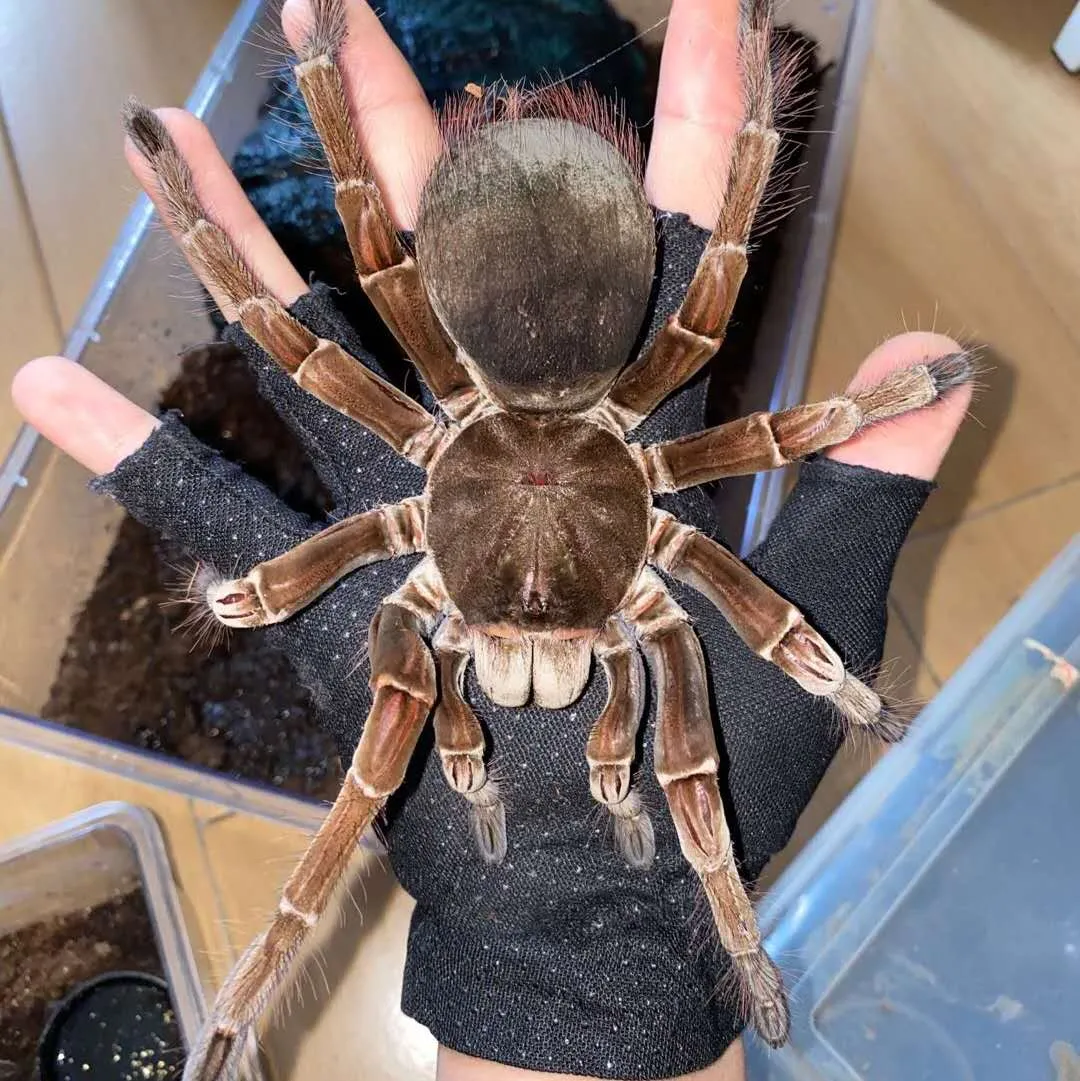
The Goliath Birdeater’s bite can be painful due to its large fangs, but its venom is not considered lethal to humans. The effects of a bite are typically localized, causing pain, redness, and swelling at the bite site. However, the bite can also trigger a more severe reaction in individuals with allergies. While the bite itself is not life-threatening, it is still important to seek medical attention if bitten, especially if symptoms worsen or if there is any sign of an allergic reaction.
Lifespan
Goliath Birdeater tarantulas have a relatively long lifespan compared to many other spider species. Females can live for 12 to 25 years or more in the wild, while males typically have a shorter lifespan, often only living for 3 to 6 years. This difference in longevity is due to the fact that males often die shortly after mating. The extended lifespan of females allows them to reproduce multiple times, ensuring the continuation of their species.
Behavior and Temperament
Goliath Birdeaters are generally not aggressive, but they will defend themselves if they feel threatened. They are typically nocturnal creatures, spending most of the day hidden in their burrows. When disturbed, they may exhibit defensive behaviors, such as rearing up, hissing, and flicking urticating hairs. Despite their intimidating appearance, they are usually more inclined to flee than to attack. Understanding their behavior is crucial for anyone considering keeping one as a pet.
Defense Mechanisms
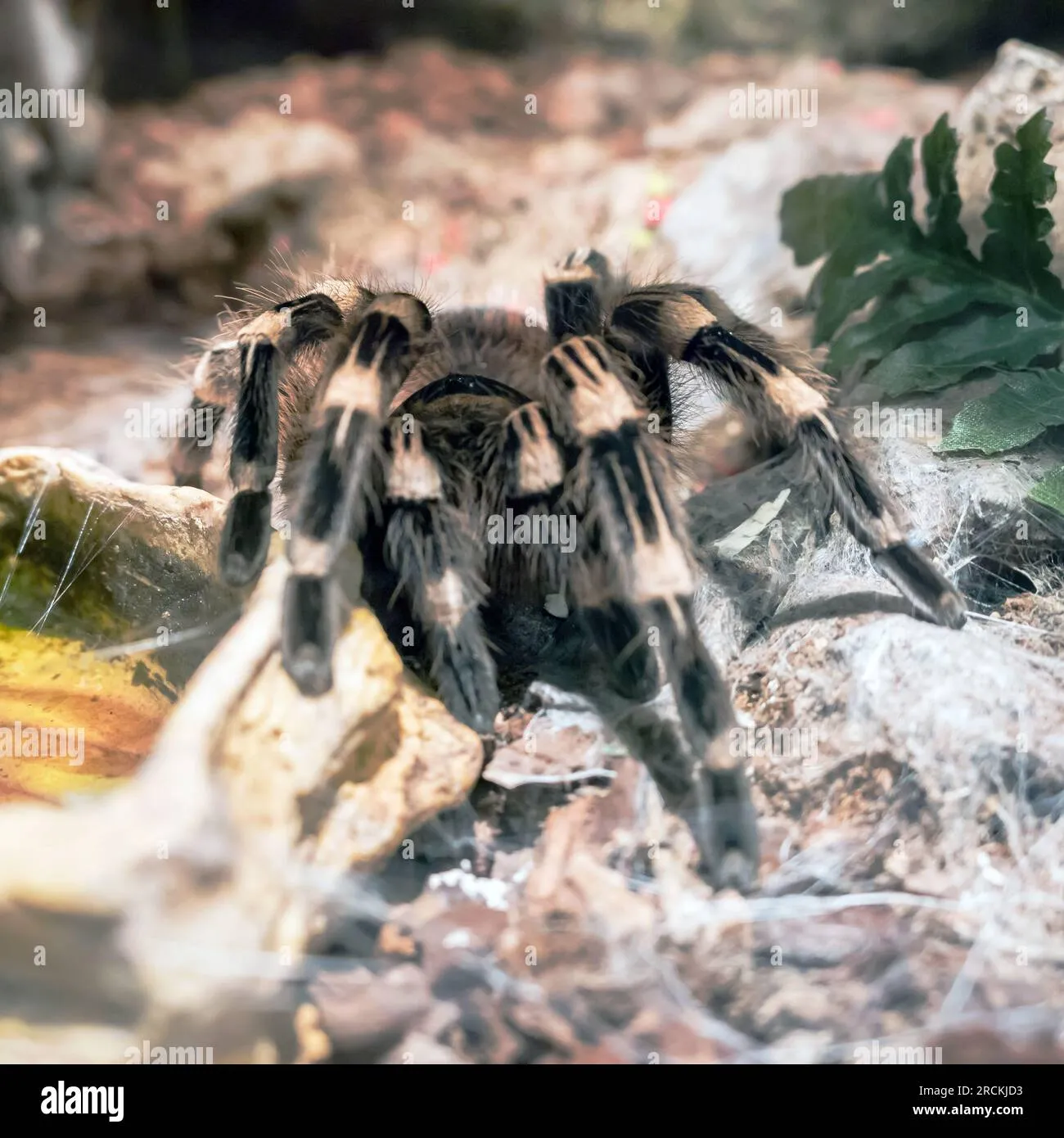
In addition to their size and imposing fangs, Goliath Birdeaters have several defense mechanisms. One of these is their ability to flick urticating hairs from their abdomen. These hairs are irritating to the skin and can cause significant discomfort if they come into contact with a potential predator or a threat. They also hiss, a sound created by rubbing their legs together, which can be a warning to potential threats. Their large size also makes them difficult for many predators to handle.
Molting Process
Like all tarantulas, Goliath Birdeaters undergo a molting process to shed their exoskeleton and grow larger. This is a vulnerable time for the spider, as it is soft and defenseless until its new exoskeleton hardens. The molting process can take several hours or even days, and the spider will often remain hidden during this time. After molting, the spider’s colors often appear brighter and more vibrant. (goliath-birdeater-molting.webp)
Breeding and Reproduction
Breeding Goliath Birdeater tarantulas in captivity can be a challenging but rewarding experience. It involves carefully introducing a male to a receptive female, which can be a risky endeavor for the male, as the female may attempt to eat him. If successful, the female will lay eggs in a silk sac. The spiderlings will hatch after a few months and undergo several molts before reaching maturity. The breeding process is a fascinating aspect of their life cycle, offering a glimpse into the complex behaviors of these remarkable creatures.
Goliath Birdeater Tarantula as Pets
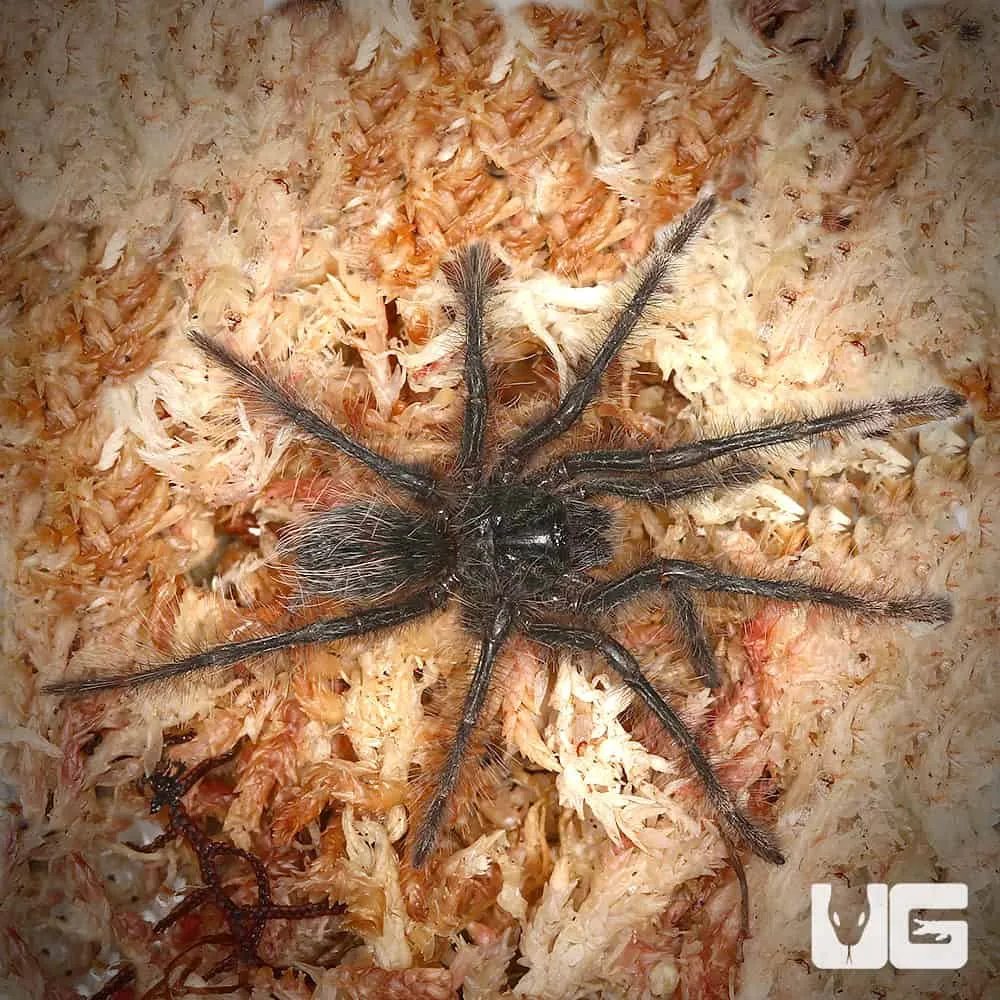
Goliath Birdeater tarantulas are sometimes kept as pets, though they require a significant commitment and understanding of their needs. They need a large enclosure with appropriate substrate, humidity, and temperature. They also require a varied diet and careful handling due to their size and potential for defensive behaviors. (goliath-birdeater-pet.webp) While they can be fascinating to observe, they are not recommended for novice pet owners. They are best suited for experienced keepers who are familiar with the care and handling of large tarantulas, ensuring both the spider’s well-being and the owner’s safety.
